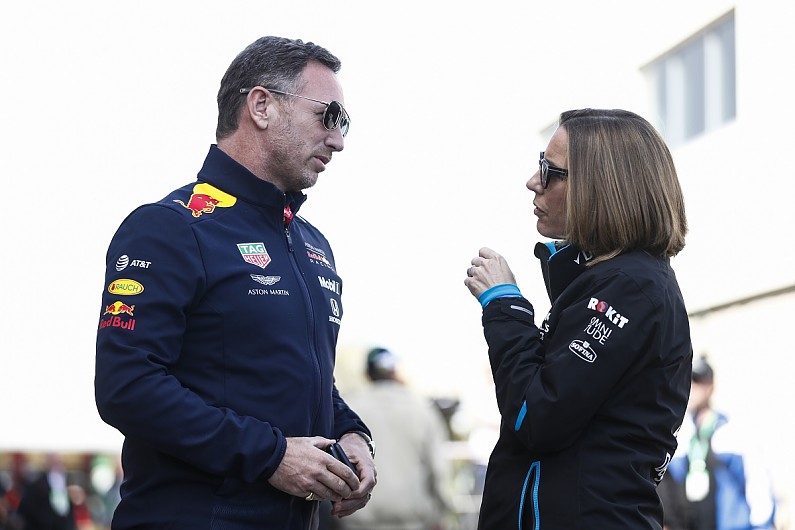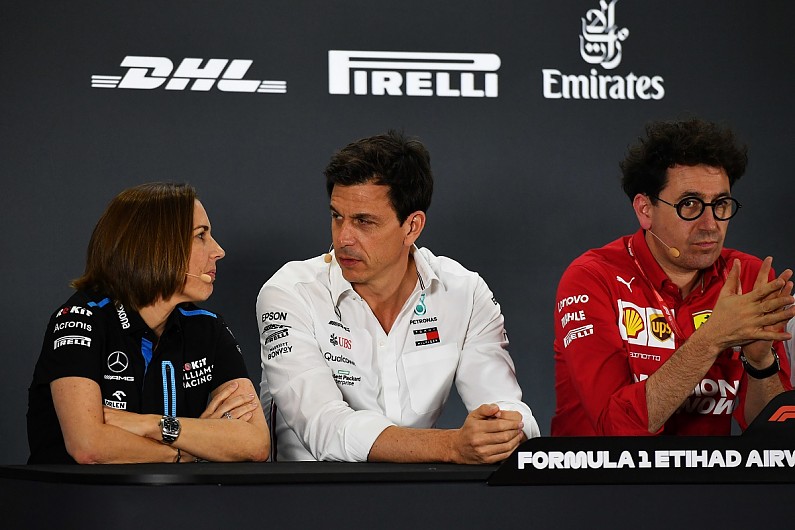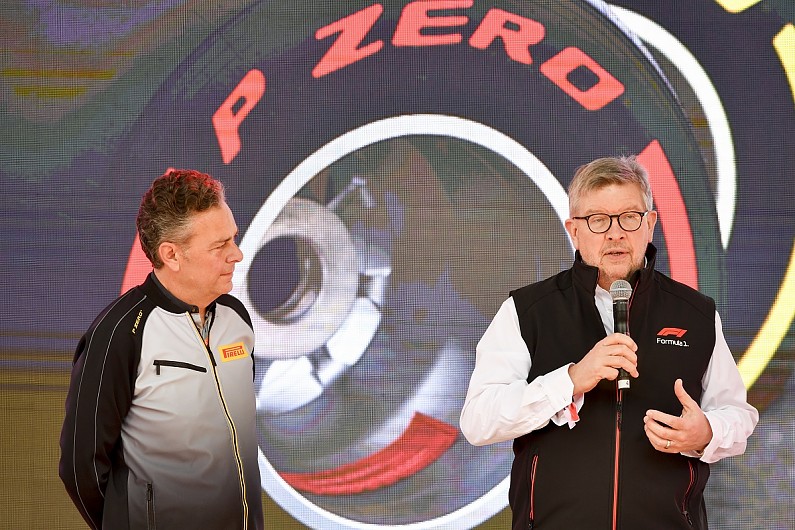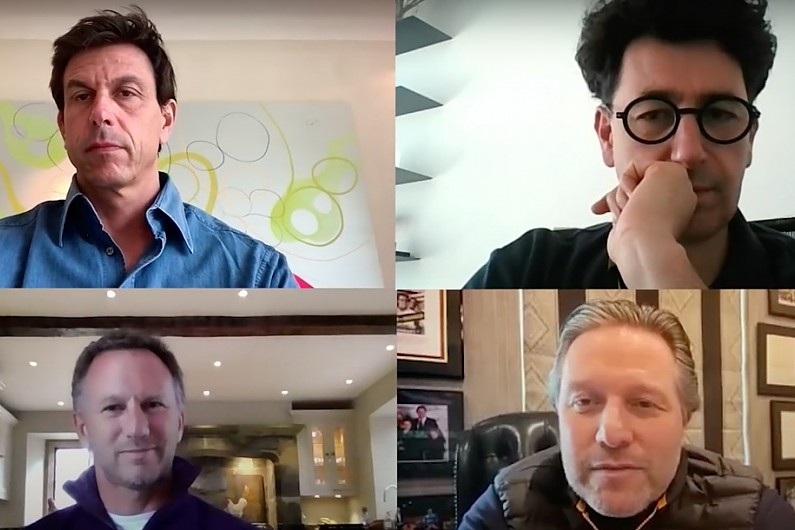With the COVID-19 pandemic forcing the majority of the world to abandon their offices and adjust to working from home, video meetings have become the new normal.
The video platform Zoom has become one of the most-used apps in the world, hosting everything from high-level government meetings to weekly quizzes between family and friends.
And it also played a key part in helping define the future of Formula 1. As talks ramped up to outline the post-pandemic landscape, stakeholders took decisions that will change the sport forever were taken from the comfort of their own homes.
It has been an interesting exercise in F1 politics, helping give some of the lesser-heard teams more of a voice instead of being drowned out. It is something Williams deputy team boss Claire Williams has been especially appreciative of.
“I’m invariably the only woman who ever attends any of these meetings,” said Williams in a Sky F1 interview. “I count the number of men there are in the room, and I’m normally in a room with 30-odd blokes, and me, so I can never get a word in edgeways at these meetings.
“But on Zoom, you have that facility to raise your hand, and Nikolas Tombazis from the FIA, who chairs the meetings, chairs them brilliantly, and no-one is allowed to speak unless your hand is raised.
“He does it in order of when you put your hand up. I still get a bit nervous in the meetings, and I was still nervous raising my hand on Zoom. But I got to raise my hand, and then Nikolas says ‘Claire’s turn to talk’.

“I actually get to talk in these meetings now, because everyone has to listen when you raise your hand when it’s your turn.
“You can’t keep talking or trying to get a word in edgeways like in a normal meeting.”
The last physical F1 team meeting took place at a hotel in the small hours of the morning on Friday in Melbourne, leading to the cancellation of the Australian Grand Prix. Since then, team bosses have not only been engaged in talks about the push to get the new season underway, but have also laid the foundations for a more sustainable future.
They’re hardly minor topics that would ordinarily be discussed in a quick video chat. A delay in the new regulations to 2022, a new aerodynamic handicap system, and, most crucial of all, a slash in the budget cap from next year have all been measures agreed in recent weeks through Zoom meetings.
“They’ve been really productive,” Williams said. “It’s really being incredibly responsible for the future of our sport and ensuring that we put exactly what needs to be put in place is in place, so we as teams have a strong future in this sport.
“I think the FIA and F1 have done a fantastic job of keeping us focused. In the beginning, from the start of coming back from Australia and doing the meetings, we were having a lot of meetings and they were lasting four or five hours, which is quite a long time on Zoom.”
Haas F1 team principal Gunther Steiner said that while the importance of the matters at hand meant there was greater collaboration between teams, there were still elements of gamesmanship in the Zoom meetings.

“Sometimes you can see everybody has got their soft spot for something,” Steiner said on Sky F1. “I wouldn’t say they’re trying to outfox – nobody wanted to outfox everybody, everybody is just trying to give the best from where he comes from or where he knows most.
“There is sometimes a little bit of play where you can see where he comes from. Everybody comes with this expertise into this meeting, and tries to be the smartest guy in the room on some matter.
“I think it was a very educated and fair discussion all the way along. The FIA put a lot of effort in as well. They worked hard to get all the compromises done. I think it’s tough work, because it’s really down to the nitty gritty, and they for sure have not got the amount of people that we have got behind us.”
The team bosses weren’t the only ones making some of the biggest decisions of their careers on video calls. In the case of Carlos Sainz Jr, his switch to Ferrari for 2021 was agreed not with a handshake, but through cyberspace.
The Spaniard did all he could to keep McLaren chiefs Zak Brown and Andreas Seidl primed on talks with Ferrari. While they started in the winter, the deal was only finalised once Sebastian Vettel’s departure from Maranello had been agreed upon.
Even without the personal interaction, Sainz was eager to repay the faith McLaren had shown in him by ensuring the team was aware of his movements at all times.
“I was on the phone with Mattia [Binotto] now and then, on the phone with Zak constantly, on the phone with Andreas,” Sainz told the official F1 website following the Ferrari announcement.

“[There were] a few Zoom meetings of course, like everyone, but for me the key of this process has been the clarity and the openness of all parties involved to make it happen.
“And just [not having] any awkward ‘around the back’ situations. That makes me incredibly proud and the way it has all been managed makes me feel very happy and very thankful to Zak and his team.”
It meant there was no bitterness or tension once Sainz informed Brown and Seidl of his decision – even if it was akin to dumping someone by phone call.
“They were happy for me,” Sainz said of their reaction. “They congratulated me and they said: ‘Look, Carlos, you deserve it and I’m sure you will do great there’, and that confidence boost is always nice to hear from your bosses.”
But there have been a couple of new factors Zoom meetings have given to high-stakes F1 meetings.
The fact the camera only shows the upper half of the body has allowed for some furtive texting to others at the virtual table, the rest of the participants unaware – and even some sneaky snacking.
“I’m not telling who’s in my text chat – but we definitely have a few who we message between what’s going on!” said Williams.

“You do kind of think how do I get up to go for a bathroom break here without people realising that I just disappeared? I can’t work out how to mute the camera or whatever.
“You can sit there with a blanket on your lap, so I sit there with a nice shirt on like everyone is doing, looking really smart – and then I’ve got a blanket of my lap, and I’ve got all my snacks to my side. So it’s great!”
While F1 may be getting back up to speed next month in Austria, it will still be some time until the paddock is back to its regular capacity and in-person meetings become the norm again.
For Pirelli head of car racing Mario Isola, the boom in video conferencing can pave the way for a more efficient approach to F1 politics.
“Until a couple of months ago, every meeting like the Technical Working Groups, or the Sporting Working Group was organised in a place and people are obliged to go there,” Isola told Autosport in a #thinkingforward series interview last month.
“[You would travel] from Italy or Switzerland or the UK or any other place, and fly to the meeting to be in the same room all together. We had quite a good number of meetings of this type via video conference and they were working quite well.

“Maybe that could be also the way for the future, because you are a lot more flexible. If I have to find in my agenda a couple of hours or three hours to attend a meeting, it is very different compared to spend one day abroad and leaving very early in the morning, attend the meeting and then back in the evening or the day after.
“We are saving a lot of time with this new system. It is working very well. If you have a good internet signal it is working very well. So, why not?
“Maybe it’s something positive we can learn from this.”
